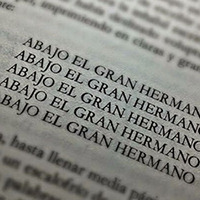A nano-transistor that enters cells like viruses
January 23, 2022In its most recent program, La Quinta Columna discussed a 2010 article on a nano-transistor capable of entering cells as if it were a virus.
This is one of the many articles that has attracted the attention of Spanish researchers since perfectly fits with what was found in vaccination vials analyzed by Dr. Campra.
All this would be part of the whole nano- and micro-technological system that's formed in the human body, creating nano-networks.
More details about this are on the fragment selected by Orwell City.
Note: Remember that you can find all the information related to the research of La Quinta Columna and other independent researchers in the archive.
Ricardo Delgado: Let's take a look at the following article published by El País in 2010.
"A transistor that enters cells like viruses. The Harvard-made nanosensor can record biological activity without disrupting it. Coming out of Harvard University's laboratories and shaped like a V, a new nano-transistor smaller than many viruses can be inserted inside a cell and record its activity without disrupting it. The new device is 100 times smaller in diameter than those used until now, which were also flat, while this one is flexible and three-dimensional."
This flexible property is somehow familiar to us. Sorry.
"These field-effect nano-transistors..."
Like the famous graphene transistors.
"...known as nanoFETs, represent the first measurement of the inside of a cell with a semiconductor device, says Charles M. Lieber, director of the project, whose results are published in Science."
This Lieber guy was the one we saw yesterday, I think, right?
"Scientists claim..."
Dr. Sevillano: Yes. If I'm not mistaken.
Ricardo Delgado: Yes.
"Scientists claim that these transistors can be used to measure the flow of ions or electrical signals in cells, especially neurons." Aimed at the neurons, huh. "They can also be associated with receptors or other biological elements" "to detect the presence of biochemical compounds inside a cell. The diameter of human cells ranges from 10 microns (such as neurons) to 50 microns (such as cardiac cells). The new sensors are in the nanometer range (which is three orders of magnitude less)..." That's 1,000 times less. "...and scientists have found that they're accepted by the cell membrane in a similar way to what happens with viruses and bacteria when they coat them with a phospholipid double layer, similar to the structure of the membrane. We have found that the nanosensors can be inserted and removed from the cell many times without detectable damage to the cell, Lieber explains."
"The transistor is integrated into a V-shaped nanowire that connects to electrical wires to function." "This work can be a breakthrough in the understanding of intracellular structures, said Zhong Lin Wang," a nanotechnology expert."
Of course, he's Chinese. And it's this. We've seen quite a bit of these "tweezers" in vaccines too, you know?
Let's see. Well. Here they put the scale representation of a nanosensor inserted in a cell to record the internal activity. Like neurons, as well. Well, this was already published, as I said, by El País in 2010.
Dr. Sevillano: Yes, right. Since then, the time has passed, and things have been done. They have done everything we have seen there. Everything. You know, nanotubes, self-assembling structures... Everything.
But they haven't asked anybody's permission. Nor said, "We're just going to..." They haven't asked anybody's permission. Have they asked anybody's permission? Have they said, "We're going to do this and...?" And have they told anybody anything? "No, no..." "That's a lie, that's a lie."
Is the thief going to tell you that he's robbing you or the murderer that he's killing you?
Ricardo Delgado: Exactly.
If you like my articles and the videos you find here and, if you can and feel like it, you can make a small donation. Your support is always more than appreciated.
Follow Orwell City on Telegram. Thank you for reading!
—Orwellito.























0 comments